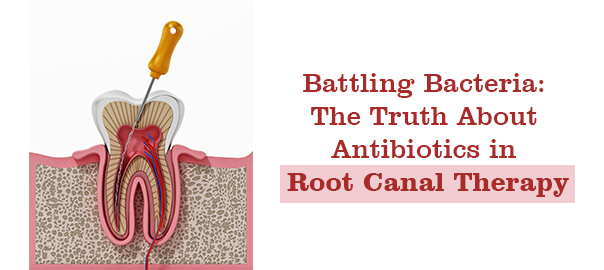
Battling Bacteria: The Truth About Antibiotics in Root Canal Therapy
The Role of Antibiotics in RCT
Root canal therapy is a crucial endodontic procedure for treating severe tooth infections. While the primary goal is to remove infected tissue from within the tooth, the use of antibiotics in conjunction with this treatment warrants careful consideration.
Current Approach to Antibiotics in Endodontics
• Antibiotics are not routinely prescribed for most root canal procedures
• Focus is on mechanical removal of infected pulp tissue
• This approach helps prevent antibiotic overuse and bacterial resistance
When Are Antibiotics Considered?
Dental professionals may prescribe antibiotics in specific scenarios:
• Presence of fever
• Significant swelling
• Signs of systemic involvement
Special Considerations: Infective Endocarditis Risk
• Patients with certain cardiac conditions may require prophylactic antibiotics
• This precaution aims to prevent oral bacteria from causing heart tissue infections
The Mechanics of Root Canal Treatment
The cornerstone of effective root canal therapy includes:
1. Removal of infected pulp tissue
2. Thorough cleaning of the canal system
3. Proper sealing to prevent reinfection
These steps often negate the need for systemic antibiotics in routine cases.
Antibiotic Prescription Practices
When antibiotics are deemed necessary:
• Practitioners must consider the patient’s full medical history
• Potential allergies are taken into account
• The duration of antibiotic courses may vary
• Patients are instructed to complete the prescribed regimen as directed
Although the use of antibiotics in normal root canal treatments is limited, their careful application is still vital in some clinical scenarios. The emphasis on appropriate canal sealing and mechanical debridement as opposed to merely using antibiotics highlights how endodontic therapy is changing. In addition to ensuring that dental infections are effectively treated, this strategy supports the larger initiative of antimicrobial stewardship in healthcare.
Leave a Reply
Leave a Reply
Explore More Similar Posts
Explore More Blogs


Leave a Reply